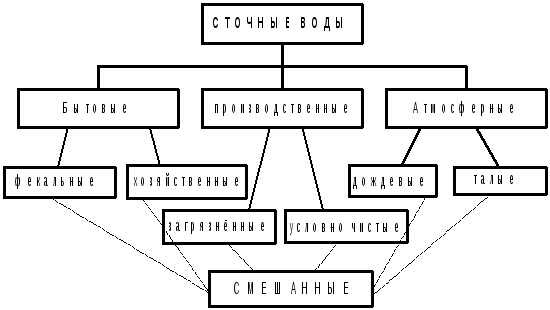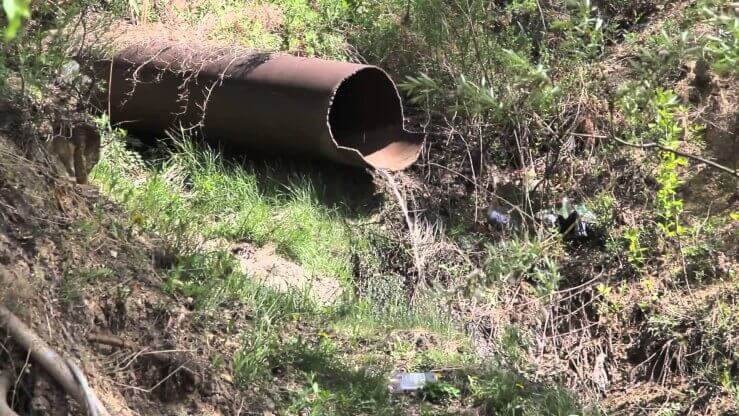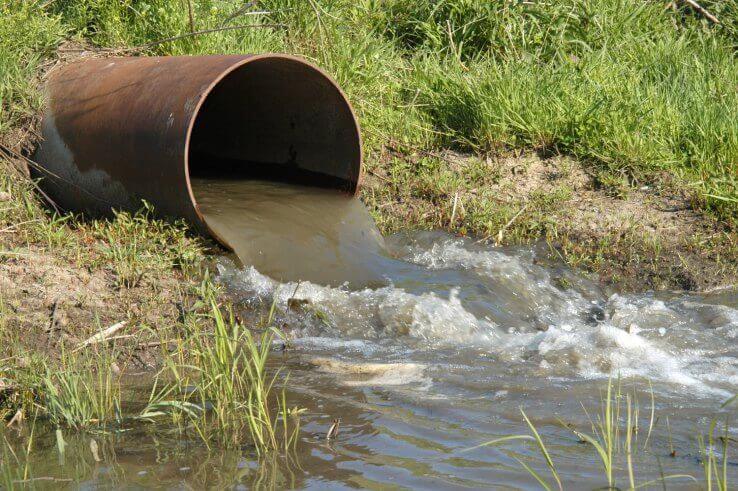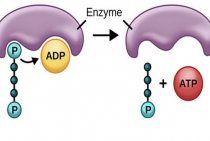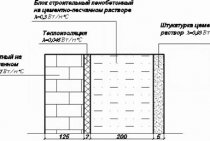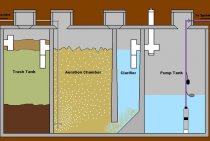Classification of wastewater according to the size of the particles dissolved in them
Often, wastewater is classified according to the size (dispersion) of pollutant particles contained in it.
Insoluble (large)
- Contain insoluble large particles, the size of which is 0.1 mm or more.
- Such particles are visually distinguishable in water. They may precipitate or float. They often form suspensions, which make the water look cloudy.
- These are impurities of organic and inorganic origin.
- Allowing such a solution to settle and removing the sediment, you can significantly reduce the level of contamination.
emulsions
- Particle size from 0.1 microns (1 micrometer is equal to 0.001 mm, obsolete name "micron") to 0.1 mm.
- They can only be seen with a microscope. They are also able to settle and rise up, but more slowly than coarse particles.
Colloidal solutions
- Particles no more than 0.1 microns. They are not visible under a conventional microscope, do not settle under the influence of gravity and are not amenable to conventional mechanical filtration.
- Impurities can precipitate only when stable bonds between molecules are destroyed.
Soluble
- They contain substances at the level of molecules and ions up to 1 nm in size (a nanometer is equal to one billionth of a satimeter, that is, 10-9)
- Cleaning is carried out by chemical, physical and biological methods.
The task of wastewater treatment sounds relevant. This is the primary goal for humanity. However, it will be possible to solve it on a global human scale only with the targeted introduction of non-waste and non-drainage industries. And in cases where this is not possible - systems for recycling or harmless destruction.
Atmospheric drains
These include surface runoff from atmospheric precipitation - rain and melt, resulting from the melting of snow, ice and hail.
They are otherwise called storm drains, which must be removed by storm sewers. This also includes runoff from irrigation, washing streets, fountains and artificial outdoor water features, drainage structures and systems.
Surface runoff does not differ much in composition, mainly containing minerals and some organic matter.
Atmospheric waters, flowing down the surfaces of buildings, structures, industrial and construction sites, roads, fields, forests, collect all the pollution they contain.
The more polluted or contaminated the area, the more harmful substances will be washed away by precipitation.
Industry
In industrialized countries, industry is the main consumer of water and the largest source of wastewater. Industrial effluents into rivers are 3 times higher than domestic ones.
Water performs various functions, for example, it serves as a raw material, a heater and a cooler in technological processes, in addition, it transports, sorts and rinses various materials. Water also removes waste at all stages of production - from the extraction of raw materials, the preparation of semi-finished products to the release of final products and their packaging. Since it is much cheaper to throw away waste from different production cycles than to process and dispose of, a huge amount of various organic and inorganic substances is discharged with industrial effluents. More than half of the effluents entering water bodies come from four main industries: pulp and paper, oil refining, organic synthesis, and ferrous metallurgy (blast furnace and steel production). Due to the growing volume of industrial waste, the ecological balance of many lakes and rivers is disturbed, although most of the effluent is non-toxic and non-lethal to humans.
Industrial waste water
Industrial effluents are generated as a result of production activities at enterprises.They have their own gradation, in accordance with the composition of the resulting pollution:
- Conditionally clean - uncontaminated.
- Polluted.
They are removed both through the industrial system of discharge and purification, and through the central sewer.
Polluted waste water
These are waters that are actively involved in production technology. For example, for washing raw materials, in chemical reactions, finished products are washed.
Water takes on most of the industrial pollution that is dangerous to living organisms and the ecosystem.
At the enterprises of the metallurgical industry and mechanical engineering, water is involved in foundry, thermal, mechanical, and assembly processes.
Main polluting factors:
- Physical - dust, sawdust, shavings, sand, dirt, silt, scale, radioactive elements, etc.
- Chemical - acid, alkali, salts of heavy metals, oils, etc.
Common sources of chemical pollution: oil and oil products, nitrates, pesticides, phenols, etc.
Uncontaminated
Conditionally pure waters are passively involved in the technological cooling of aggregate plants and are involved in production.
Ships not equipped with oily water treatment plants
On ships not equipped with stations HE IS IN, oily waters under the shale, accumulating under the flooring of machinery spaces, should be pumped into a collecting tank, stored in it and periodically handed over to off-ship water protection facilities at oily water reception points.
On ships with a length of less than 25 m, with a total power of all internal combustion engines of less than 220 kW, ships with a dynamic support principle (SDIN) and high-speed displacement ships (SHS), it is allowed to accumulate under-shale oily waters under the flooring of machinery spaces with their subsequent delivery to off-ship water protection equipment.
During the operation of the vessel, the following measures should be taken to ensure the minimization of the amount of oily waters under the shale and the concentration of oil products in them:
- - minimization of water inflow through stern tubes, leaky connections of pipelines, stuffing boxes, fittings, etc.;
- - if a leak of fuel or oil is detected and it is impossible to immediately eliminate it, pallets or other containers are installed;
- - pipes coming from funnels and pallets installed under the equipment, test and drain valves of the fuel and oil systems, are periodically cleaned at least once during navigation, ensuring free flow of oil products into the collection tank;
- - draining fuel and oil from operating or repaired machines, mechanisms or from blowing systems that may contain fuel or oil is carried out in specially designed stationary or portable containers;
- - it is not allowed to overfill tanks in the engine room, including those intended for fuel or oil, for collecting sludge and fuel or oil leaks, as well as tanks for collecting oily cargo residues (the latter - on tankers);
- — on the dredgers, under the soil pumps, trays are installed to prevent water from getting under the flooring from the pumps when they are opened.
The transmission of oily waters under the shale to collection vessels or to a specialized cleaning vessel should be carried out through pipelines and hoses specially designed for this purpose. The use of pipelines and hoses intended for waste water is prohibited.
A ship that has handed over oily waters under the shale to an off-ship water protection technical facility is the last to be issued a certificate. The certificate indicates the date, time of transfer and the amount of transferred bilge waters. The certificate of delivery of oily waters below the surface is kept on board the ship until the next navigation and is presented to the state supervision bodies at their request.
Anthropogenic impact on water resources pollution, withdrawal, eutrophication of water bodies.Ecological problems of the seas, rivers of Aral, Baikal.
Hydrosphere -
water shell of the Earth; weight (1.5-2.5)*1018
tons; is in the form of vapors and clouds,
oceans and seas (91.3% of the mass), glaciers,
groundwater. Water in natural conditions
always contains dissolved salts,
gases, organic matter. At
salt concentrations up to 1g/kg water is considered
fresh, up to 25 g/kg - brackish, more
25 g/kg - salty. Usually in fresh water
HCO3(-) ions predominate,
Ca(2+), Mg(2+). As mineralization increases
the concentration of SO4 (-) increases,
Cl(-), Na(+), K(+). Fresh water - 1% of the total
masses.
Pollution
water is manifested in a change in physical
and organic properties, increase
the content of sulfates, chlorides, nitrates,
toxic heavy metals, reducing
oxygen dissolved in water, the appearance
radioactive elements, pathogens
bacteria and other contaminants.
Pollutants:
-
chemical.
All types are included in this
industrial, agricultural production,
transport. Represents a change
natural chemical properties of water
due to the increase in harmful impurities in it
as inorganic. (acids, alkalis,
salts, petroleum products, pesticides, dioxins,
heavy metals, phenols, ammonium and
nitrite nitrogen) -
biological.
Caused by microorganisms and capable of
to ferment with organic matter,
leads to bacteriological
infection. (viruses, bacteria, other
pathogens, algae,
yeasts and molds) -
physical.
Associated with the release of heat into the water, which
leads to a shock of the entire biocenosis
reservoirs. The source is heated
waste water from thermal power plants and industry;
rise in temperature changes
natural conditions for water
organisms, reduces
dissolved oxygen, changes
metabolic rate. Also to
physical pollution are
radioactive contamination of water
various suspensions in water systems.
(radioactive elements, suspended
particulate matter, heat, organoleptic
(color, smell), sludge, sand, silt, clay)
Pollutants:
-
Pulp and paper
complex, woodworking: organic
substances (resins, fats, lignins, phenol),
ammonium nitrogen, sulfates, suspended
substances. -
Oil and gas production:
petroleum products, synthetic surfactants, phenols, ammonium
nitrogen, sulfides. -
Engineering,
metalworking, metallurgy: heavy
metals, suspended solids, cyanides,
ammonium nitrogen, oil products, resins,
phenols, photoreagents. -
Chemical,
petrochemical industry: phenols,
petroleum products, synthetic surfactants, polycyclic
aromatic hydrocarbons, benzopyrene,
suspended matter. -
Mining,
coal: flotation reagents, mineral
suspended solids, phenols. -
Lightweight, textile
food: surfactants, petroleum products, organic
dyes, organic substances.
More
half (56%) of the water used in
economy, returns to natural
environment in the form of contaminated wastewater.
Primary responsibility for pollution
natural waters are: mechanical engineering,
including shipbuilding and ship repair (39%
from the total intake of pollutants
substances), utilities (37%),
non-ferrous metallurgy (7%) and agriculture
farm (8% excluding pesticide washes
and mineral fertilizers).
Reservoirs significantly
polluted by the discharge of sewage,
containing a large number
organic matter. In such waters
fungi and bacteria multiply rapidly
which leads to a change in the structure
animal community and to reduce
dissolved content in water
oxygen. Biological consumption
oxygen (BOD) is one of the
the most important criteria for the level of pollution
reservoir with organic matter. He
determines the amount of oxygen
necessary for the decomposition of organic
contaminants.
Eutrophication
– increase in the level of primary productivity
reservoirs due to the increase in their concentration
nutrients, mainly nitrogen and
phosphorus; often leads to blooming waters.
Main types of pollutants
The composition of waste liquids is determined by the presence of pollutants in them:
- biological;
- chemical;
- mineral.
The former include microbes (viruses and bacteria), yeast and algae cultures, fungi and vegetation. Petroleum products, surfactants, pesticides, heavy metals, dioxins, phenols, nitrogen compounds become polluting chemical impurities. Earth, slag, sand, silt are impurities of a mineral nature.
Liquids also contain conservative and non-conservative contaminants. The former do not enter into chemical reactions, do not decompose during biological treatment. Non-conservative impurities are removed from wastewater through self-cleaning bioprocesses.
Household drains
Household and household wastewater is formed as a result of daily human activity - household and physiological. They are discharged through the public sewer system.
Their composition: colloidal solutions and organics undissolved in water are found in various concentrations.
They are fecal and household.
Household sewage is and will always be. This is water that is drained into the sewer after a person washes, brushes his teeth, takes a shower, goes to the toilet. Every day we cook our own food, wash food, used dishes, we wash clothes, clean the house. This cannot be done without water.
We also include the results of the work of catering establishments, children's institutions, hospitals and sanatoriums, and all other places where there is a crowd of people - from railway stations to shops, from baths to gyms.
Thus, fats, protein, carbohydrate residues, decay and decomposition products get into wastewater.
Domestic wastewater contains 45-58% organic matter. The latter determine the main physical and chemical-biological characteristics of domestic sewage:
- Turbid, opaque, grayish-whitish in color with a characteristic smell of feces.
- Contains mineral and organic residues.
- They are partially colloidal and the state of the solution.
- A large proportion of pathogenic microbes, bacteria, viruses. Also contain fungi, rot, mold, yeast, helminths.
- The acidity is higher than neutral - pH 7.2-7.8.
The greatest danger is represented by a fungus, bacteria, helminths. Of the inorganic harm to the environment, salts that are part of cleaning and detergents for household chemicals cause harm to the environment.
Waste water classification
Wastewater can be classified according to the following criteria:
- by origin:
- industrial (industrial) wastewater (formed in technological processes during production or mining) is discharged through an industrial or general sewerage system
- domestic (household-faecal) wastewater (formed in residential premises, as well as in domestic premises at work, for example, showers, toilets), is discharged through a domestic or combined sewerage system
- surface sewage (divided into rain and melt, that is, formed during the melting of snow, ice, hail), as a rule, is discharged through a storm sewer system. They may also be called "storm drains"
Industrial wastewater, unlike atmospheric and domestic wastewater, does not have a constant composition and can be separated:
-
composition of pollutants
:- polluted mainly with mineral impurities
- polluted mainly with organic impurities
- contaminated with both mineral and organic impurities
-
by concentration of pollutants
:- with an impurity content of 1–500 mg/l
- with an impurity content of 500-5000 mg/l
- with an impurity content of 5000-30000 mg/l
- with an impurity content of more than 30,000 mg/l
- according to the properties of pollutants
-
by acidity
:- non-aggressive (pH 6.5-8)
- slightly aggressive (weakly alkaline - pH 8-9 and slightly acidic - pH 6-6.5)
- highly aggressive (strongly alkaline - pH> 9 and strongly acidic - pH
-
on the toxic effect and the effect of pollutants on water bodies
:- containing substances that affect the general sanitary state of the reservoir (for example, the rate of self-purification processes)
- containing substances that change organoleptic properties (taste, smell, etc.)
- containing substances that are toxic to humans and animals and plants living in water bodies
Chapter 2. Depletion and pollution of water bodies.
Settlements
The most well-known source of water pollution, which has traditionally been the focus of attention, is domestic (or municipal) wastewater. Urban water consumption is usually estimated based on the average daily water consumption per person, which in the United States is approximately 750 liters and includes drinking water, for cooking and personal hygiene, for household plumbing, as well as for watering lawns and lawns, extinguishing fires, washing streets and other urban needs
Almost all used water goes to the sewer. Since a huge amount of feces enters wastewater every day, the main task of municipal services in the processing of domestic wastewater in sewage treatment plants is to remove pathogens. When insufficiently treated fecal effluents are reused, the bacteria and viruses they contain can cause intestinal diseases (typhoid, cholera and dysentery), as well as hepatitis and poliomyelitis.
Soap, synthetic washing powders, disinfectants, bleaches and other household chemicals are present in dissolved form in wastewater. Paper waste comes from residential buildings, including toilet paper and baby diapers, plant and animal waste. Rain and melt water flows from the streets into sewers, often with sand or salt used to accelerate the melting of snow and ice on the roadway and sidewalks.
1. Types of wastewater
V
cities and other localities
liquid pollution of various
character. These include physiological
excretions of humans and animals, water from
baths, laundries, from washing rooms,
streets, etc.
At
availability of manufacturing enterprises
added pollution,
formed as a result of technological
processes diluted with water in one or
different degree.
proceeding
from this it can be said that waste water
(effluents) are liquids that have been
used by man to satisfy
certain needs and received at the same time
additional impurities (contaminants
substances) that changed their chemical
composition and physical properties. depending
from their origin can be divided into
the following groups (Fig. 1.1): household
(household and fecal), industrial
and atmospheric.
Rice.
1.1. Wastewater classification depending on
from their education
household
wastewater is classified according to nature
their formations on fecal (contaminated
mostly physiological waste)
and household (coming from the baths,
sinks, laundries, etc.). Composition of household
the waters are generally uniform and characterized
quantitative content of organic
substances in dissolved and insoluble
condition.
Production
waste water is generated as a result
use of water in technological
processes. Composition (quality and
quantitative) of these waters is extremely
varied and depends on the nature
production, product type
and features of technological processes.
Industrial wastewater in
depending on the amount contained
impurities are divided into contaminated
(subject to mandatory processing before
discharge into a water body or drainage system
settlement, as well as in front of them
reuse) and conditionally
clean (can be discharged into a water body
or the drainage network of the populated area
item, as well as reused
no pretreatment).
In addition, sewage
water from industrial enterprises can be
represent two categories of stocks:
-
technical,
used to provide
operation of technological equipment; -
technological,
who were directly involved
in technological processes.
atmospheric
wastewater is the result
rainfall, snowmelt; they
contain predominantly mineral
pollution and, to a lesser extent,
organic. They are subdivided
respectively, on rain and melt. TO
it also includes water used
for washing streets and buildings.
V
recently a new source
water pollution has become agricultural
economy. This is related to the use
mineral and organic fertilizers,
pesticides, etc.
Besides
In addition, one more group can be distinguished
wastewater, the so-called mixed
wastewater. They are formed as a result
mixing of the above types
waste water in sewerage systems.
Waste water classification
Waste water is
used water, as well as water that has passed through any contaminated area.
Depending on the
conditions for the formation of wastewater are divided into industrial,
household, and atmospheric (or surface).
pollutants
substances by physical condition can be divided
—
on the
insoluble,
—
on the
soluble,
—
on the
colloid impurities.
By biochemical
composition pollution are divided into mineral, organic and biological.
TO mineral
include sand, clay (clay particles), particles of ore, slag,
mineral salts and others.
organic subdivided according to
its origin into vegetable and animal. Plants are leftovers
plants, fruits, vegetables, cereals, vegetable oil, etc. organic
pollution of animal origin is the physiological excretions of people and
animals, animal tissue residues, adhesives and others.
Bacterial
and biological are introduced mainly by domestic wastewater and effluents from some
industrial enterprises (tanneries, primary processing factories
wool, enterprises of the microbiological industry, etc.). By degree
aggressiveness industrial wastewater is divided into slightly aggressive
(weakly acidic and slightly alkaline), highly aggressive (strongly acidic and strongly alkaline)
and non-aggressive.
Industrial waste
water formed in
as a result of the use of water in technological processes. Their number and
the composition is determined by the type of enterprise, its capacity, types of used
technological processes, on the composition of the initial fresh water and on local
conditions, water supply schemes for industrial enterprises.
Industrial waste water
contain various impurities and are divided into three groups:
1) Polluted
predominantly mineral impurities (metallurgical, machine-building, ore-
and coal-mining industry, plants for the production of mineral fertilizers,
acids, building materials).
2) Polluted
predominantly organic impurities (meat, fish, dairy,
food, pulp and paper, chemical, microbiological industries,
factories for the production of plastics, rubber).
3) Contaminated with mineral
and organic impurities (enterprises of oil production, oil refining,
petrochemical, textile, light, pharmaceutical industry, factories
for the production of sugar, organic synthesis products, vitamins, canned food).
Household - these are drains of canteens, baths, laundries,
toilets and others. In domestic wastewater, organic matter in contaminants
make up approximately 58% and mineral - 42
%.
atmospheric
sewage water is formed as a result
atmospheric precipitation and flowing down from the territories of enterprises. They
contaminated with organic and mineral substances.
On the territory of industrial
enterprises generate wastewater of three types: domestic, surface and
production.
For example, engineering
businesses use water:
- for cooling (heating) of raw materials and products, parts and
nodes of technological equipment;
- preparation of various
technological solutions;
- washing, enrichment,
purification of raw materials or products;
- household
service.
Domestic waste water
enterprises are formed during the operation on its territory of showers, toilets,
laundries and canteens.
Surface sewage
industrial enterprises are formed as a result of washing away rain, melt and
irrigation water impurities accumulating on the roofs and walls of industrial
buildings and on site. The main impurities of these waters are
solid particles (sand, stone, shavings and sawdust, dust, soot, plant residues
and trees, etc.), petroleum products (oils, gasoline, kerosene) used in
vehicle engines, as well as organic and mineral fertilizers,
used in factory squares, flower beds and greenhouses.
big
the amount of water withdrawn to provide industrial enterprises
returned to water bodies with varying degrees of pollution.
| Previous |
Compound
In domestic wastewater, the pollutants are always the same. The composition of such waters is approximately the same, but still the concentration of individual substances can fluctuate, reflecting the daily routine of those using the sewerage system. And only a long and regular selection of these effluents for analysis can give those average composition indicators that will be considered valid.
The level of wastewater pollution can be calculated if the concentration of sediments and impurities (calculated in mass) is divided by a volume unit - g / m3.
With wastewater, inorganic and organic components containing suspended particles, colloids, and solutions enter the sewerage system. And also there are pathogenic bacteria, helminth eggs, protozoan cysts, fungi. Even in a period when there are no epidemics, domestic wastewater may contain E. coli, dysentery and others, as well as viruses. Despite the fact that the effluent is contaminated mainly with organic matter, it should be properly disposed of. This will reduce the sanitary hazard when they enter water bodies.
This nature of pollution can sometimes also have industrial effluents, when it is waste from slaughterhouses and meat processing plants.
Industrial effluents cannot even have an approximate composition, since production at factories is fundamentally different from each other, and it all depends on the manufacturing technology of products. Atmospheric wastewater depends on the local climate, topography, as well as architecture and road construction materials.
